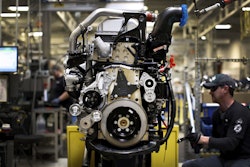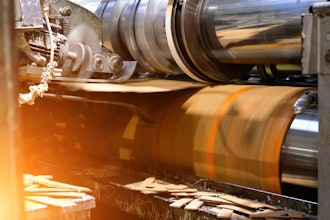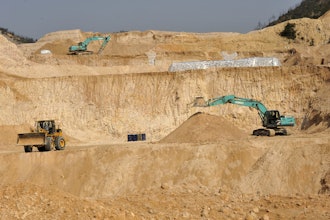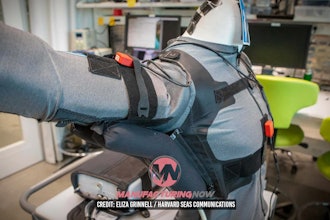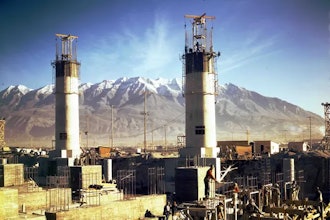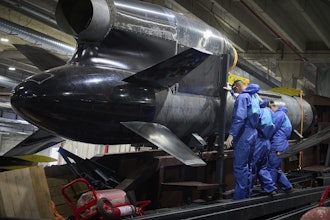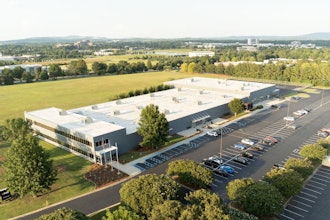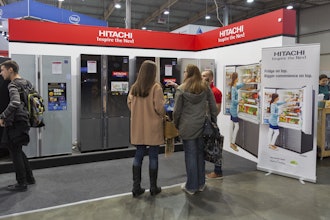
Just like a bespoke pair of shoes, the material handling industry is growing ever-more customized.
Customer demands are changing, so the supply chain must adjust accordingly. It's no secret that ecommerce is still booming. Though it's not a new trend, many supply chain managers still have a lot of questions about handling multichannel and omni-channel operations — especially since most see their growth projections as heavy in ecommerce.
For apparel suppliers, that means an emphasis on customization and efficiency within the supply chain. Orders no longer come standardized by the carton — customers want one pair of this and two pairs of that. Retailers also demand more value-added services, and wholesalers acquiesce in order to stay competitive. And customers expect to receive their orders faster than ever.
Now is the time to examine how ecommerce will continue to shape material handling trends for apparel in 2015.
Greater Customization
It used to be if a customer bought a T-shirt and some running shoes from one company, they would ship from two separate facilities. Not so anymore. Now customers receive those orders in a single box as retailers consolidate operations into a single multichannel facility. Where products used to be sorted by category, they're now viewed as a unit — and ecommerce is driving that.
Companies are shipping smaller orders with fewer units per carton and rely on their wholesalers to have a more varied inventory readily available. Retailers are also asking wholesalers to fulfill orders at a store level. Instead of shipping one large order to a distribution center that then parcels product to each location, the wholesaler must process hundreds of smaller orders that go to direct to the store.
Retailers are also more frequently asking for value-added services at the wholesale level, such as price ticketing and product bagging for presentation. Though large retailers always made such requests, it's becoming common among smaller retailers, too.
Some retailers sell the same product at different price points, but the wholesaler will take care of the task within the DC. It moves labor to the source rather than the branch, offering a competitive advantage for younger companies looking to gain market share.
Unit sortation equipment helps simplify all of these processes by automating them. Retailers aren't ordering a full case of one style or color. They'll get one or two of each, which leaves warehouses with another four or five to deal with.
Unit sorters automatically deliver the right amount of product to the packer, while some distribution centers temporarily store residuals in an automat retrieval system. It saves all the labor — and cost — of handling the cartons multiple times.
As helpful as it is for small, diverse orders, this equipment is equally adept at processing large-volume orders — or large orders divided among multiple locations. If the DC needs to ship shoes to 500 destinations, it will build 500 cartons, batch the SKUs together and send them on their way.
Location, Location, Location
Several large retailers have commissioned studies to look at how they can divide their DCs so products get to customers and brick and mortar stores faster.
Others that sell a large amount of a particular product are starting to bypass their DCs altogether. They'll request a container of their selected SKUs directly from the factory, which affords them a discount because the DC didn't have to touch the product.
Overall, however, the trend is having more goods flowing through DCs. Shipping windows are getting smaller. It used to be when customers ordered by noon, they could expect to get their product the next day. Now they can order it by 5 p.m. and still expect to get it tomorrow. The process requires automation and strategically located DCs near both their customers and regional shipment hubs.
All of these trends are driven by a need for improved performance and productivity, lower costs and better service – and getting the perfect pair of shoes in your customers' hands.
Bob Liebe and Chris Capsaw are both Division Presidents at Wynright Corporation.
To read more manufacturing and technology news, sign up for our newsletter. You can also follow Manufacturing Business Technology on Twitter @MBTwebsite.
ENTRIES OPEN: Establish your company as a technology leader. For 50 years, the R&D 100 Awards, widely recognized as the “Oscars of Invention,” have showcased products of technological significance. Learn more.




